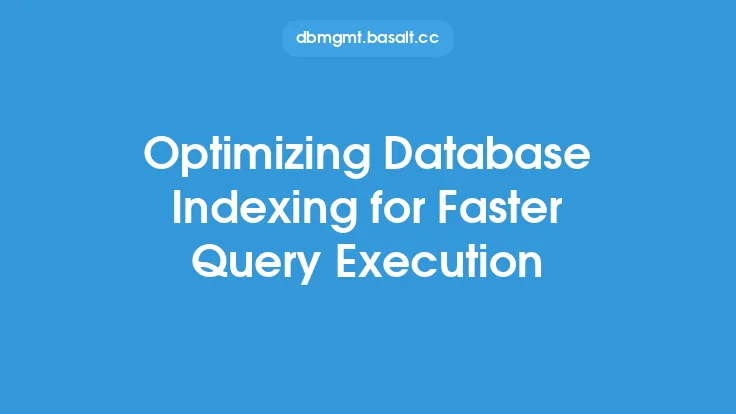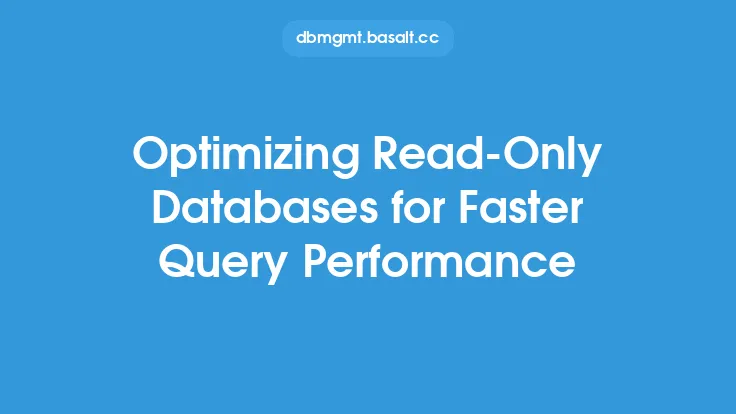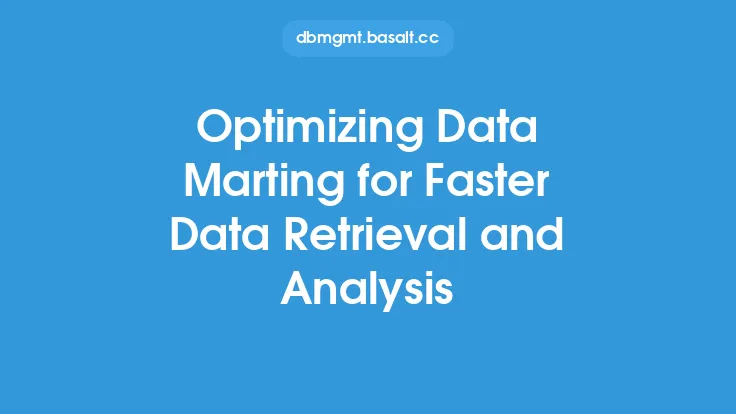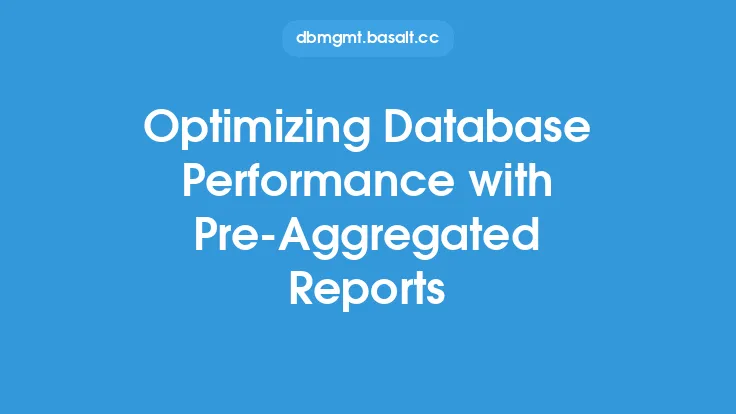When it comes to optimizing SQL queries for faster execution times, there are several key factors to consider. The first step is to understand how the database management system (DBMS) executes queries. Most DBMSs use a query optimizer to determine the most efficient execution plan for a given query. The query optimizer takes into account various factors such as the query syntax, the database schema, the available indexes, and the statistics of the data.
The query optimizer's goal is to minimize the number of disk I/O operations, reduce the amount of data that needs to be processed, and optimize the use of system resources such as CPU and memory. To achieve this, the query optimizer uses various techniques such as index selection, join ordering, and subquery optimization. Understanding how the query optimizer works can help developers write more efficient queries and avoid common pitfalls that can lead to slow execution times.
Understanding Query Execution Plans
To optimize SQL queries, it's essential to understand how the DBMS executes them. A query execution plan is a sequence of steps that the DBMS follows to execute a query. The plan includes operations such as table scans, index scans, joins, and aggregations. By analyzing the query execution plan, developers can identify performance bottlenecks and optimize the query accordingly.
There are several tools available to analyze query execution plans, including the EXPLAIN statement in SQL. The EXPLAIN statement provides detailed information about the query execution plan, including the estimated cost of each operation, the number of rows processed, and the indexes used. By analyzing the EXPLAIN output, developers can identify areas for optimization and make targeted changes to the query.
Indexing Strategies
Indexing is a critical aspect of query optimization. Indexes can significantly improve query performance by reducing the number of disk I/O operations and minimizing the amount of data that needs to be processed. There are several types of indexes, including B-tree indexes, hash indexes, and full-text indexes. Each type of index has its strengths and weaknesses, and the choice of index depends on the specific use case.
To optimize indexing strategies, developers should consider the following best practices:
- Create indexes on columns used in WHERE, JOIN, and ORDER BY clauses
- Use composite indexes to cover multiple columns
- Avoid over-indexing, as this can lead to increased storage requirements and slower write performance
- Monitor index usage and adjust indexing strategies accordingly
Query Rewriting Techniques
Query rewriting involves modifying the query syntax to improve performance. There are several query rewriting techniques, including:
- Reordering joins to reduce the number of rows processed
- Using EXISTS instead of IN to reduce the number of subquery executions
- Avoiding correlated subqueries and using derived tables instead
- Using window functions to reduce the number of self-joins
By applying these query rewriting techniques, developers can significantly improve query performance and reduce execution times.
Statistics and Histograms
Accurate statistics and histograms are essential for the query optimizer to make informed decisions about the execution plan. Statistics provide information about the distribution of data in the tables, while histograms provide detailed information about the frequency of values in a column.
To ensure accurate statistics and histograms, developers should:
- Regularly update statistics using the ANALYZE statement
- Use histogram-based statistics to improve the accuracy of the query optimizer
- Monitor statistics and adjust the update frequency accordingly
Resource Optimization
Resource optimization involves optimizing the use of system resources such as CPU, memory, and disk I/O. To optimize resource usage, developers should:
- Monitor system resources and adjust the query execution plan accordingly
- Use parallel processing to improve query performance on multi-core systems
- Optimize disk I/O by using efficient storage systems and optimizing disk layout
By optimizing resource usage, developers can improve query performance and reduce execution times.
Best Practices for Query Optimization
To optimize SQL queries for faster execution times, developers should follow these best practices:
- Use efficient query syntax and avoid unnecessary operations
- Optimize indexing strategies to reduce disk I/O operations
- Use query rewriting techniques to improve performance
- Ensure accurate statistics and histograms to inform the query optimizer
- Optimize resource usage to improve query performance
By following these best practices, developers can write efficient SQL queries that execute quickly and improve overall database performance.
Common Pitfalls to Avoid
There are several common pitfalls to avoid when optimizing SQL queries. These include:
- Over-indexing, which can lead to increased storage requirements and slower write performance
- Using correlated subqueries, which can lead to slow execution times
- Avoiding the use of efficient query syntax, such as using SELECT \* instead of selecting specific columns
- Failing to update statistics and histograms, which can lead to inaccurate query execution plans
By avoiding these common pitfalls, developers can write efficient SQL queries that execute quickly and improve overall database performance.
Conclusion
Optimizing SQL queries for faster execution times requires a deep understanding of how the DBMS executes queries, as well as the various techniques and strategies available to improve performance. By following best practices, avoiding common pitfalls, and using the right tools and techniques, developers can write efficient SQL queries that improve overall database performance and reduce execution times. Whether you're a seasoned developer or just starting out, optimizing SQL queries is an essential skill that can make a significant difference in the performance and scalability of your database applications.





